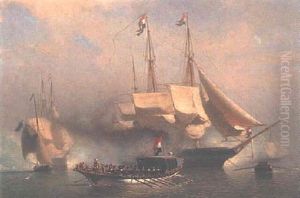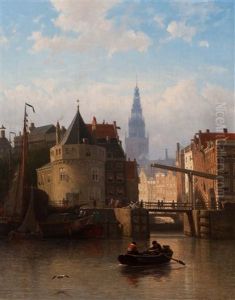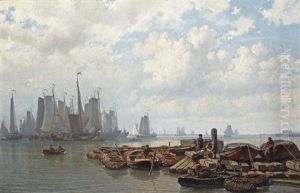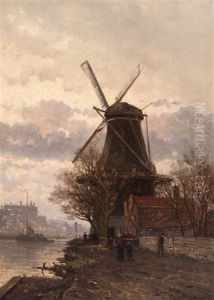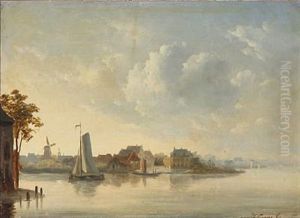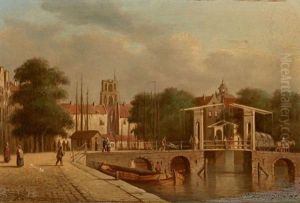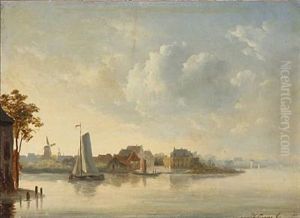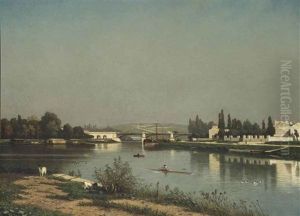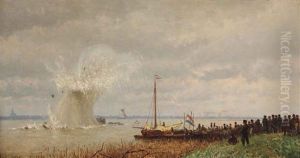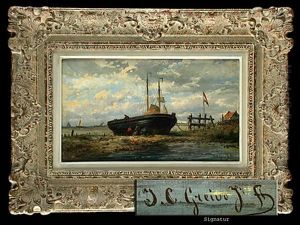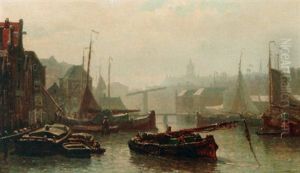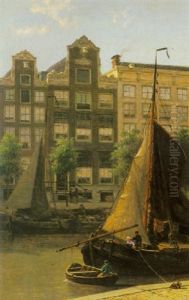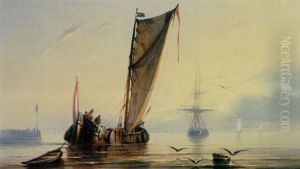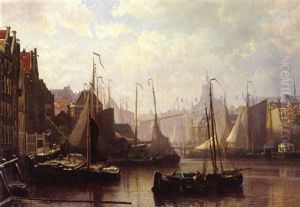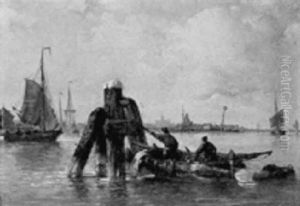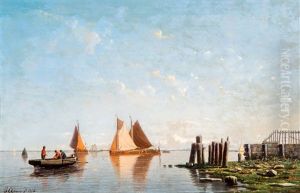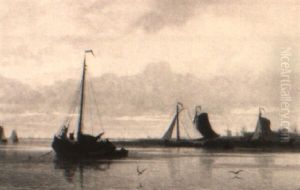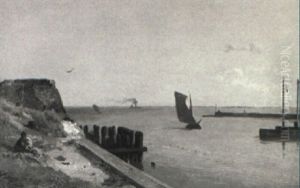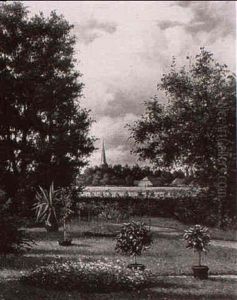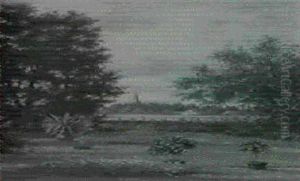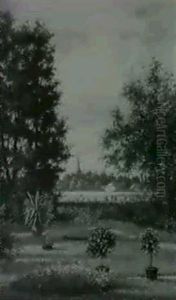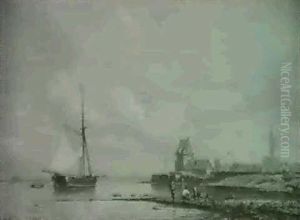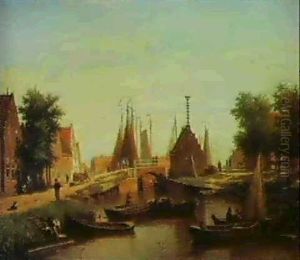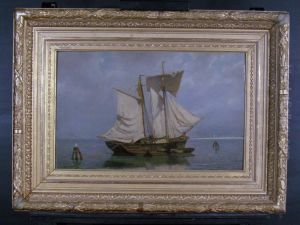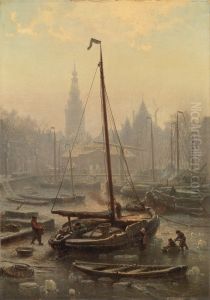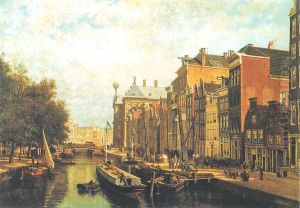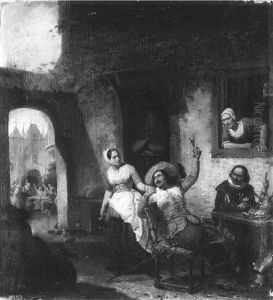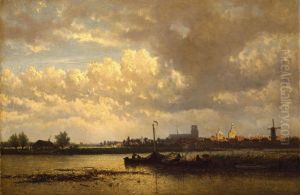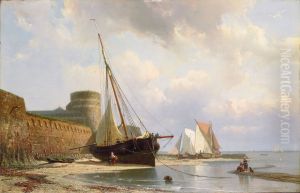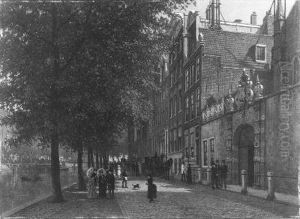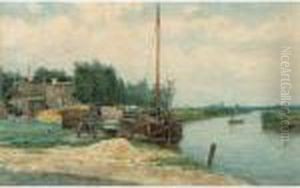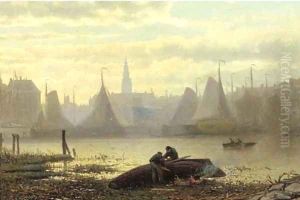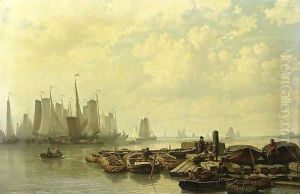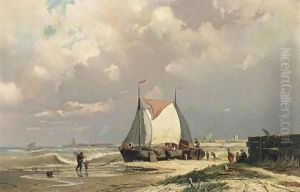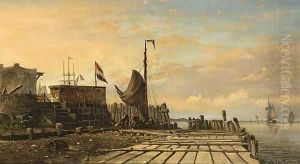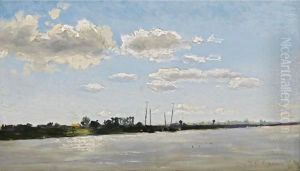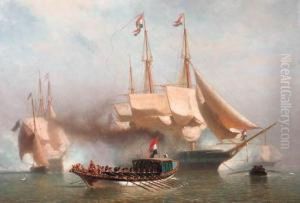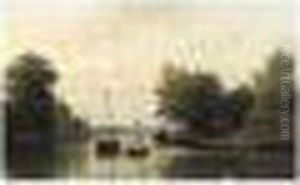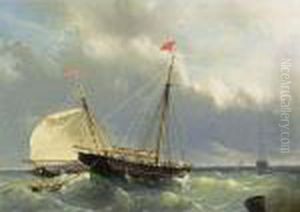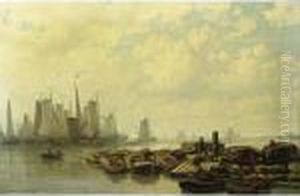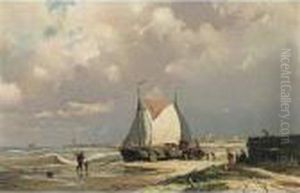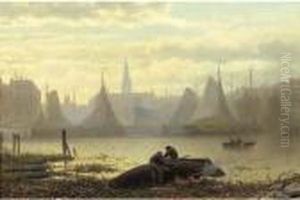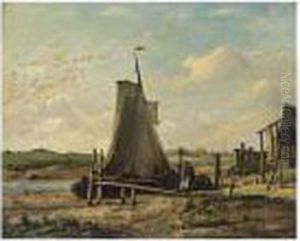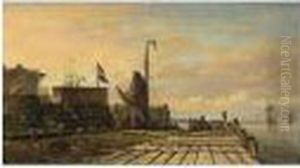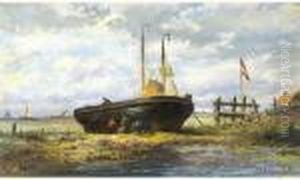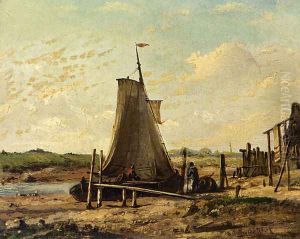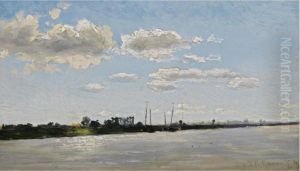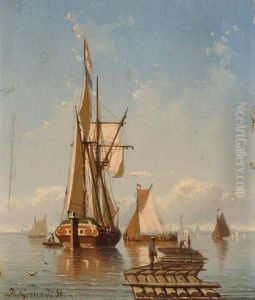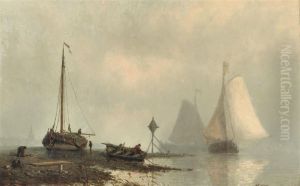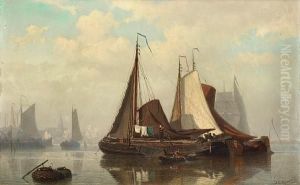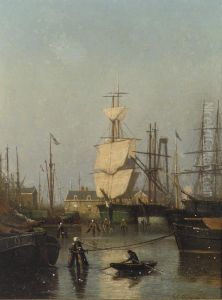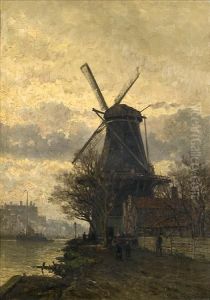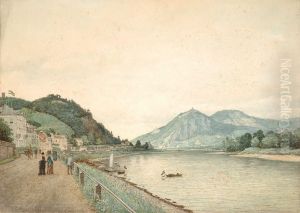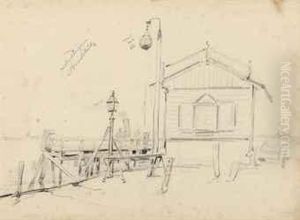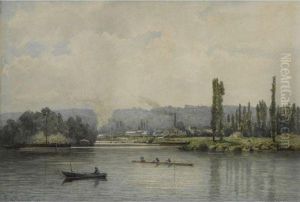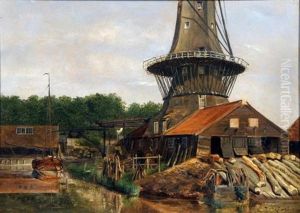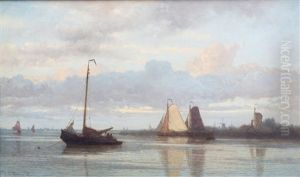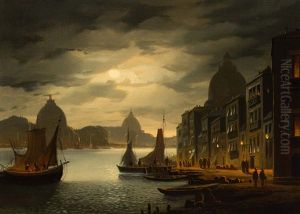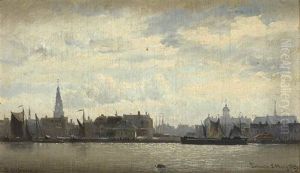Johan Conrad Greive Paintings
Johan Conrad Greive was a Dutch artist born on September 22, 1837, in Amsterdam, Netherlands. He emerged as a notable figure in the 19th-century Dutch art scene, particularly known for his landscape paintings, cityscapes, and watercolors. Greive's work often captures the serene beauty of the Dutch countryside and the bustling activity of urban life in Amsterdam, reflecting a keen observation of his surroundings and a profound appreciation for his homeland.
Greive's artistic journey began under the guidance of his father, Jan George Greive, who was also a respected artist. This early exposure to the art world profoundly influenced Johan Conrad, who went on to develop his unique style. He was especially adept at depicting light and shadow, utilizing these elements to bring a dynamic quality to his compositions. His cityscapes of Amsterdam are particularly celebrated for their detailed representation of the city's architecture and canals, offering a picturesque view of 19th-century urban life.
Throughout his career, Greive participated in numerous exhibitions and was a member of various art societies, which helped establish his reputation in the Dutch art community. His works were well-received by both critics and the public, and he was known for his ability to capture the essence of the Dutch landscape and urban scenes with authenticity and emotional depth.
Despite his success, Johan Conrad Greive remained committed to his artistic vision, continually exploring new techniques and subjects. His legacy is preserved in the collections of several Dutch museums, where his paintings continue to be admired for their beauty and historical value. Johan Conrad Greive passed away on November 29, 1891, in Amsterdam, leaving behind a body of work that continues to inspire and captivate art lovers around the world. His contribution to Dutch art is remembered for its portrayal of the country's landscape and city life, capturing a moment in time with enduring appeal.
